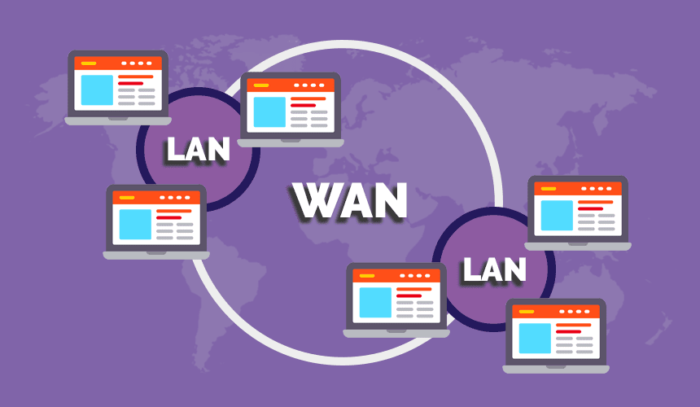
Communication is a vital element for day-to-day activities. Organizations, for instance, rely on robust communication channels to share information with their customers, employees, and other organizations.
A commonly used communication channel is the Wide Area Network (WAN). It enables individuals, small businesses, and multinational corporations to exchange ideas and resources from any location.
Discover the basics of a wide area network and why you need it for daily activities.

Understanding Wide Area Networks
A wide area network (wan) is a computer-based platform connecting various devices. Unlike a local network, it spans beyond the walls of a building to incorporate many geographical areas and sometimes the whole world. An example of a wide area network is the Internet which brings many international networks together.
Wide area networks serve many vital purposes. For example, you need a network of computers when sending an email. One computer will store the composed message while another acts as a server to keep the message for viewing by the client.
A wide area network also serves the following essential functions:
- Data storage and backup.
- Resource sharing between organizations and employees.
- Hosting internal computer applications.
- Connecting to cloud-based applications.
- Video and audio communication.

Essentials of a Wide Area Network
Designing a suitable WAN depends on a business’s unique preferences. However, some essential components define a successful WAN architecture. The crucial elements of a WAN include the following;
End Devices
An end device is a simple computer system that links to other computers within the network. It can be a mobile device, personal computer, mainframe computer, data center, or server. The type and location of the end device will determine the type of WAN infrastructure to deploy.
Local Area Network (LAN)
A local area network is an indispensable component of the WAN. Two or more end devices form part of a larger LAN environment. These may include simple devices like a laptop and modem combination or multiple end devices. On the other hand, a collection of two or more LAN environments forms a wide area network (wan).
Customer Premises Equipment (CPE)
CPEs are special equipment from service providers that improve and align the network infrastructure to business needs. CPEs also incorporate management and maintenance protocols from the service providers. Some common CPEs include set-top boxes, virtual private networks, routers, firewall appliances, and telephones.
Routers and Access Points
An access point extends the wireless internet coverage for easy grouping of end devices. It forms part of the service provider’s premise equipment.
On the other hand, a router is a device that interconnects LANs within a wide area network. It facilitates a streamlined data flow to and from an end device. It may also contain a built-in modem to enable a signal connection between an external network and the end devices.
Connecting Media
Every WAN architecture relies on robust connecting media to carry data packets. Connecting media also helps end devices connect to the internet remotely. Examples of connecting devices include subscriber cards, fiber optic cables, cellular spectrums, and satellite connectivity tools.
Network Switch
A network switch links end device to an access point and router. It also regulates and distributes data packets across the end devices within the network. You may have network switches in multiple layers, provided they supply every end device within the network with the required bandwidth.

Types of Wide Area Networks
There are different types of wide-area networks to consider. It all depends on the performance, speed, reliability, and security level you require. Below are the common types of wide-area networks available today:
Switched Wide Area Network
A switched WAN links multiple LANs within a defined infrastructure but doesn’t have end nodes. A switching exchange at the center of the network determines resource distribution mechanisms across locations and devices within the network. A switched WAN is ideal for decentralized systems.
Point-to-point WAN
A point-to-point wide area network links two end nodes or local area networks through a leased line. The end notes further connect to end devices, forming a local network. An example of a point-to-point WAN is the office broadband network that uses dial-up technology.
Broadband Internet WAN
A broadband network is more consumer-oriented, with asymmetrical data connections. Although it is relatively affordable, it is unreliable as download speeds are usually higher than online upload speeds.
Software-defined WAN
It is a relatively new form of wide area network that relies on a software platform for control. It eliminates the costly physical hardware and ensures a balance between the cost of operation and performance.

Benefits of a Wide Area Network
A wide area network enables people and organizations to connect and share important information. It is, therefore, the backbone of an enterprise and an essential part of daily life. Installing a wide area network guarantees the following benefits:
Boost Communication Effectiveness
A WAN uses the available bandwidth capacity to offer the requested service. Therefore, regardless of your location, you can convey information quickly and effectively across the network.
Seamless Communication Tool
You can communicate seamlessly with anyone in a different country or continent without worrying about connectivity speed. In addition, you can deliver your message swiftly while maintaining anonymity and privacy on the network.
Wider Network Coverage
As the name suggests, a WAN covers a wider geographical area. With a simple click on the computer or tapping an icon on the phone, you can pass information spanning geographical boundaries.
Access Updated Files
A wide area network allows you to access updated data on the server. So, even if a power surge or device failure occurs, you’ll still access all data from the server, provided the device you’re using is part of the network.
Sell Items Online
WAN has enabled the development of online retail stores where people buy and sell merchandise. Since it’s not restricted to a country’s geographical boundary, you can sell products to customers in overseas markets.

Store Data Online
Wide area networks provide a means of data storage. For instance, you can secure essential files and documents through cloud storage and set access permissions to the data. As a result, you can only share the data with authorized users within the network.





